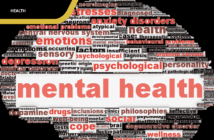Compiled by Angela Mutiso
When Your Vision Gets Blurry
An 85 year old retired teacher, was taken aback when he noticed his vision was steadily getting blurry. He had initially thought it was just a temporary matter, but overtime, he realized it was getting worse by the day. His fading vision had now become a serious problem, which gradually led to blindness.
For some time, Uncle Charles, as he is dotingly known, assumed that his vision would come back after being assured that there are many known cases of vision restoration after a cataract surgery (which is what he was suffering from). When the ophthalmologist from a highly-rated eye hospital gave him the incomprehensible diagnosis – that because of this condition (cataract), his sight was gone and nothing could be done to repair it, he almost did not want to believe it.
However, being the stoic man that he was, Uncle Charles accepted this seemingly unsurmountable challenge with fortitude and decided not to dwell much on it. After processing this information, he started looking at the positive side of life and even expressed gratitude that his eyes had served him well, when it was important to him, only waning long after retirement. He painfully but realistically acknowledged that this was what the gradual decline of his eyesight had led to.
Some ailments develop gradually, almost preparing you for what is to come. Today, Uncle Charles encourages anyone with eye ailments to treat it promptly, as unknown to them, something else, including blindness might be hatching slowly. His biggest regret is that at his age, most of his peers are long dead, and his blindness has kind of isolated him. Besides, he is not able to see his bubbly grandchildren and great grandchildren.
Blindness is one of the most common health conditions we experience today. It is worth noting that there are multiple reasons that lead to permanent blindness. Ranging from genetics to acquired conditions.
What are cataracts? What causes them? How is it diagnosed? Is it treatable?
Cataracts are cloudy areas that form on the lens of your eyes, it is a common eye disorder that arises when the normally clear lens of the eye becomes cloudy or dense, causing a steady decrease in vision. The lens of the eye mostly contains water and proteins. As you grow older, these proteins can bunch together and cause clouding, resulting in the development of a cataract.
Cataracts may not instantaneously cause noticeable vision issues and might develop steadily over time. If you do not get treated, the cataract can worsen and potentially cause blindness. Cataracts frequently cause blurry or foggy vision, light sensitivity, night blindness, and the appearance of halos around lights. You may feel as if you’re looking at the world through a murky window. As your vision deteriorates, you may find it difficult to carry out regular tasks.
Many ophthalmologists consider cataracts an unavoidable part of aging, and age-related cataracts is the most common form of the condition. But you don’t have to live with fading vision. Eye doctors can perform a surgery to remove the cataracts and reestablish your vision. It is largely safe to do this, and it is highly effective in restoring vision for many people.
Types of cataracts
According to my Cleveland clinic.org. There are many types of cataracts; Pediatric cataracts affect babies and children. Babies may be born with cataracts or they may form sometime after birth. It can be passed on from a family member or can be due to an injury. Quick treatment is necessary to avoid lazy eye issues. Traumatic cataracts occur when your eye is injured by something. Structures around the lens may need to be repaired when this happens. Meanwhile, Secondary contracts are cloudy patches that form on your lens capsule, or the membrane that covers your lens.
Age-related cataracts are the most common type. Indicators include blurry vision and glare around lights. Surgery is recommended when cataract symptoms affect `your daily life. To establish if you have cataracts, the doctor will ask you about your symptoms. The medic will want to know how things appear to you. They will do a visual acuity test. And will want to know if things are shadowy and if the glare disturbs you mostly at night.
Other complications that afflict the eye
Vision is important to us, and any threat to it can be particularly distressing. Our eyes play a crucial role in how we experience and manage our world. Losing or impairing this sense can considerably impact one’s daily life and independence. In addition, the psychological effect of an eye ailment can’t be ignored. Nervousness, unease, and fear of the future can aggravate the physical aspects of the condition, increasing the overall strain.
There are several factors that can lead to sight loss. According to vision health, the major causes of blindness and low vision in the United States are primarily age-related eye diseases such as age-related macular degeneration, cataract, diabetic retinopathy, and glaucoma. Other common eye disorders include amblyopia and strabismus.
Meanwhile, Retinitis Pigmentosa (RP) is another eye ailment. It is dreaded because of its aggressive nature and the possibility of causing blindness overtime. RP is a group of genetic disorders that affect the retina, which is the light-sensitive tissue at the back of the eye. This disorder causes a continuing loss of vision due to the degeneration of photoreceptor cells in the retina. Photoreceptor cells, called rods and cones, capture and process light, enabling us to see. RP is usually inherited, however, there are cases where RP occur sporadically with no family history. At the moment, there is no cure for it but research is ongoing.
Other eye problems as explained by maxivisioneyehospital include; Age-related macular degeneration, this is where the central vision, is affected. Then there is Glaucoma, this can course irreversible damage, and occurs when fluid in the eye creates pressure. Diabetic Retinopathy is a condition where the blood vessels in your eyes get affected by high blood glucose levels. While Trachoma is an eye infection caused by a bacteria named Bacterium Chlamydia Trachomatis. Corneal opacity, happens when the cornea of the eye gets scarred. It then becomes difficult for light to pass through the eye, causing the cornea to be clouded or blurred. Meanwhile, refractive errors are quite common eye disorders that lead to blurred vision. Although this might seem usual, if left untreated, it can lead to blindness. This one cannot be prevented, maxivisioneyehospitalsays if it is diagnosed early, vision can be restored. It is mainly treated through corrective glasses, lenses, or refractive surgery…
If you think you have a cataract or are experiencing changes in your vision, you should see your eye doctor for an accurate diagnosis and suitable treatment choices. I have delved deeply into the cataract ailment because cataracts are one of the most common visual impairments that are causing blindness worldwide.
As illustrated in this feature, there are several other ailments that affect our eyes. Not all of them are mentioned here. It is important to understand the best way to take care of your eyes. Take not that like in many cases, most diseases if left untreated or not detected early can become chronic or fatal.
Health tips
Salt water, or saline, is one of the most effective home remedies for eye infections. Saline is similar to teardrops, which is your eye’s way of naturally cleansing itself. Salt also has antimicrobial properties – health line
Carrots are good for you!
Throughout history, carrots have been liked for their health benefits. Beyond the familiar orange variety, carrots come in purple, white, yellow, and red. The carrot peel, is also known to be quite nutritious, even though most people usually scrape it off.
Vitamin A deficiency causes a disease called dry eye, which affects normal vision and causes night blindness. The antioxidants lutein and zeaxanthin in carrots can improve eye health. These two natural compounds protect the retina and lens. The American Journal of Ophthalmology found that women who ate more than two servings of carrots a week had a 64% lower risk of glaucoma than women who did not eat one serving of carrots- PharmEasy.
Below is what health.com says about carrots…
- Carrots stimulate healthy vision
- May boost brain health
- They regulate blood pressure
- carrots may boost your immunity
- carrots are a good balance for your blood sugar
- They help in weight management
- They may lower the risk of cancer
- They have been known to lessen the risk of heart disease –Health.com
For better results, consult your doctor
The author is the Editorial Consultant of the Accountant Journal.




